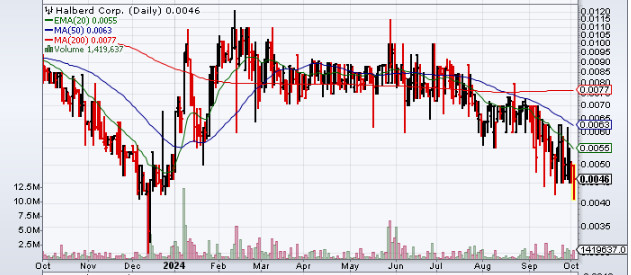Halberd Corporation (OTC:HALB) & Athena GTX Announce Early Success in WatchDawg® PTSD Treatment Pilot Study
On Tuesday, Halberd Corporation (OTC:HALB) was one of the companies that came on the radars of investors. That came about after the company revealed the results from the WatchDawg pilot study that had been recently concluded.
Halberd & Athena GTX Report Initial Success of WatchDawg® PTSD Treatment Pilot Study
Halberd Corporation announced that 10 military veterans had been participants in the study in which they were administered with nutraceuticals and pharmaceuticals (LDX). The study revealed steady positive impact thanks to the treatment, and the data indicated improvement in all-round health. Additionally, the subjects had also been provided with around-the-clock mental health therapies from the Yogani/Exalted Warrior Foundation.
The participants used a mobile phone and a wrist monitor in order to upload the vital sign data to the Athena Device Management Suite (ADMS). The ADMS is approved by the FDA. During the study period, a range of well-being indicators had been monitored in each of the participants through wearable technology provided by AthenaGTX.
Some of those indicators included skin temperature, heart rate, blood oxygen level, and respiration rate. In the news release, it was further noted that the company met all the objectives that had been set out beforehand. As the company worked on getting into the next steps of the study, it urged interested parties to consider enrolling in it.
CEO Comment
Dr. Mark Darrah, CEO of Athena GTX, stated, “The results of this pilot study are very encouraging. We met all of our objectives set for this effort, helped the participants with improved health, and discovered ways we can improve the treatment methodology going forward. The proprietary LDX/CBN combination and specialized yoga/meditation positively impacted health and wellness, and the data acquisition system effectively supported participants. We will use what we learned plus feedback from participants to improve the treatment protocol as we proceed to a 100-patient Phase 1 clinical trial.”

